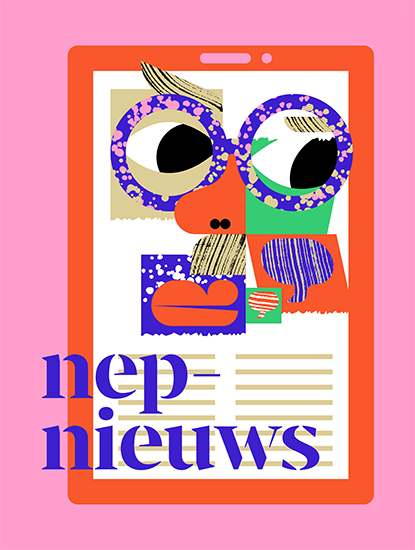Fake news
The term fake news is often used as an umbrella term for any kind of misleading information, but in fact fake news is only one of many types. When we refer to fake news, we specifically mean made-up stories or deepfakes created in order to mislead people for political or commercial reasons.
Propaganda
Propaganda is information intended to sway the public opinion and to get people to act in a certain way. Often this involves propagating half-truths or straight-up lies. Propaganda is often associated with authoritarian regimes, but they certainly aren’t propaganda’s only purveyors.
Conspiracy theories
Conspiracy theories are theories that try to explain major events by blaming them on (fictional) conspiracies. There are many such conspiracy theories about the origins of the coronavirus. Conspiracy theories are often not completely off the wall: they tend to be fairly well-reasoned, just based on incorrect assumptions. They are usually presented as the one and only truth.
Bad journalism
Bad journalism is also a type of misleading information. Journalists can be negligent when (double-)checking their sources, or draw the wrong conclusions from scientific studies. Although the reporting is not intentionally misleading in this case, the effect is still that end users receive the wrong information.
Hate speech
Hate speech encompasses any statements or images that attack a person based on features such as ethnicity, religion, sexual orientation, gender etc. The purpose of the messenger is literally to incite hatred against the target. This can also involve telling lies or taking events out of context in order to ‘prove’ a point.
Framing
Framing is a persuasion technique in which specific words and images are selected in order to frame a message in a certain way. All other context is usually omitted. Those who engage in framing literally build a frame around the point they want to get across. That way, the receiver of the message can look no further than the frame and receives a one-sided image of the truth.
Satire
Satire is a specific type of humour used to comment on developments in society. Satire takes real events as its basis, but it humorously exaggerates or subverts them. Famous examples of satirical websites include www.raaskalderij.be and www.speld.nl. There is nothing inherently wrong about satire, but those who fail to pick up on the humorous intent might take the satirical message as true.
Meme
A meme is an image or animation used and spread by internet users, usually on social media, that includes a few words or phrases. A meme responds to current events and cultural phenomena and has humorous intent. Like satire, a meme can be misleading to those who miss the humorous intent of the message.
Phishing
Phishing is a type of scam where criminals try to obtain your bank details. Phishers will often pretend to contact you in the name of an official organisation, like a bank or the government, via email, telephone or text message. For example, they might pretend you are entitled to financial compensation and ask you to enter your details on a fraudulent website - that might look real and trustworthy at first sight.
